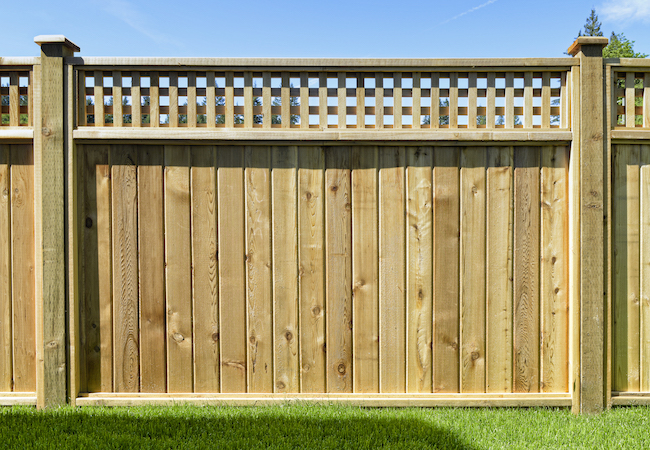All Categories
Featured
Prior to the setup procedure begins, it's vital to correctly prepare your residential property to ensure that whatever goes smoothly. Below's an overview on how to prepare your residential or commercial property for fence installation.
Additionally, check for any type of underground barriers like lawn sprinkler, irrigation pipes, or utility lines. You can generally call your regional utility business to note the places of these underground functions to avoid accidental damages during installation. It's always best to make sure the ground is devoid of obstructions prior to the contractor starts digging.
![]()
![]()
Conclusion. Preparing your building for fencing setup is a crucial step in the procedure that can conserve you cash, time, and stress. By comprehending local laws, noting property lines, getting rid of the installation location, and interacting with your next-door neighbors, you can make certain a effective and smooth installation. Making the effort to prepare correctly will not just make the installment procedure easier however additionally result in an attractive, durable fencing that improves your building for several years to come.
- Check Regional Regulations and Permits. Before starting the physical preparations, it's important to understand the regional policies surrounding fencing installment. Each district might have different guidelines relating to fence elevation, product, positioning, and whether a permit is called for. If you live in a community with particular guidelines, you may need to get a permit before installment or validate with your Homeowners Association (HOA) Constantly study the zoning and allowing rules in your area to avoid penalties or needing to redesign your work.
- Mark Your Residential Or Commercial Property Lines. Recognizing exactly where your property lines are is vital to ensure the fencing is mounted properly. You do not desire to inadvertently construct component of your fencing on your neighbor's land, as this might lead to disputes.
- Clear the Setup Location. Next off, you require to prepare the area where the fence will be mounted. These items can interfere with the fence setup process and may need added labor or tools to get rid of, which might boost prices and time.
Additionally, check for any type of underground barriers like lawn sprinkler, irrigation pipes, or utility lines. You can generally call your regional utility business to note the places of these underground functions to avoid accidental damages during installation. It's always best to make sure the ground is devoid of obstructions prior to the contractor starts digging.

- Consider Accessibility for Installation Devices. Throughout the fence setup procedure, heavy tools such as diggers, messages, or trucks may require to access your home. Make certain that there is a available and clear course to your residential or commercial property for these cars to prevent any delays. It's crucial to discuss this with your contractor beforehand so they can intend appropriately if you have a slim driveway or minimal access. Clearing up the pathway likewise helps to prevent damage to your grass, landscape design, or any type of frameworks near the installment location.
- Interact with Next-door neighbors. If you're setting up a fencing on or near the property line, it's considerate to inform your neighbors concerning the project beforehand. If you're working with a contractor, ask them to be mindful of your neighbor's property during installation.
- Select Your Fence Material and Design. Prior to installation begins, make a decision on the type of fencing material and design you desire. In addition, make sure to connect your option with the professional so they can prepare appropriately, guaranteeing they have all the essential products on hand for a smooth setup.

- Get ready for the Last Touches. Once the fencing is mounted, you might need to care for some final touches. These can include discoloration or painting a wood fence, including article caps, or ensuring evictions turn properly. The setup team might need extra time to ensure everything straightens as planned if you have actually chosen for an attractive or personalized layout. Once the setup is full to make sure everything fulfills your assumptions., it's a good idea to inspect the fencing.
Conclusion. Preparing your building for fencing setup is a crucial step in the procedure that can conserve you cash, time, and stress. By comprehending local laws, noting property lines, getting rid of the installation location, and interacting with your next-door neighbors, you can make certain a effective and smooth installation. Making the effort to prepare correctly will not just make the installment procedure easier however additionally result in an attractive, durable fencing that improves your building for several years to come.
Latest Posts
Transform Your Home with High Quality Flooring Solutions
Published Apr 21, 25
1 min read
Teen Independence Account: A Smart Start to Financial Self-reliance
Published Apr 21, 25
1 min read
NAPA AutoCare Certified: Rely on Montclare Auto Repair for Top-Tier Repairs
Published Apr 20, 25
2 min read
More
Latest Posts
Transform Your Home with High Quality Flooring Solutions
Published Apr 21, 25
1 min read
Teen Independence Account: A Smart Start to Financial Self-reliance
Published Apr 21, 25
1 min read
NAPA AutoCare Certified: Rely on Montclare Auto Repair for Top-Tier Repairs
Published Apr 20, 25
2 min read